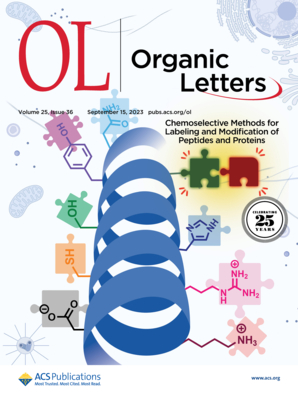卤代膦盐介导的光化学C(sp3) -H功能化
IF 5
1区 化学
Q1 CHEMISTRY, ORGANIC
引用次数: 0
摘要
本文报道了一种在可见光下用卤代膦盐作为双功能试剂实现C(sp3) -H多功能功能化的方法。它们同时作为光催化剂和氢原子转移试剂,不需要外源金属催化剂。这种策略使苯基,烯丙基和脂肪族C-H烷基化,肼化和氰化。这一发现大大扩展了卤代膦盐的合成用途,使其超越了其传统的作用,成为绿色有机合成的模块化光化学支架。本文章由计算机程序翻译,如有差异,请以英文原文为准。


Halophosphonium Salts-Mediated Photochemical C(sp3)–H Functionalization
Herein we report a method that uses halophosphonium salts as dual-function reagents for versatile C(sp3)–H functionalization under visible light. They serve simultaneously as photocatalysts and hydrogen atom transfer reagents, eliminating the need for exogenous metal catalysts. This strategy enables benzylic, allylic, and aliphatic C–H alkylation, hydrazination, and cyanation. The discovery significantly expands the synthetic utility of halophosphonium salts beyond their classical roles, establishing them as modular photochemical scaffolds for green organic synthesis.
求助全文
通过发布文献求助,成功后即可免费获取论文全文。
去求助
来源期刊

Organic Letters
化学-有机化学
CiteScore
9.30
自引率
11.50%
发文量
1607
审稿时长
1.5 months
期刊介绍:
Organic Letters invites original reports of fundamental research in all branches of the theory and practice of organic, physical organic, organometallic,medicinal, and bioorganic chemistry. Organic Letters provides rapid disclosure of the key elements of significant studies that are of interest to a large portion of the organic community. In selecting manuscripts for publication, the Editors place emphasis on the originality, quality and wide interest of the work. Authors should provide enough background information to place the new disclosure in context and to justify the rapid publication format. Back-to-back Letters will be considered. Full details should be reserved for an Article, which should appear in due course.
 求助内容:
求助内容: 应助结果提醒方式:
应助结果提醒方式:


